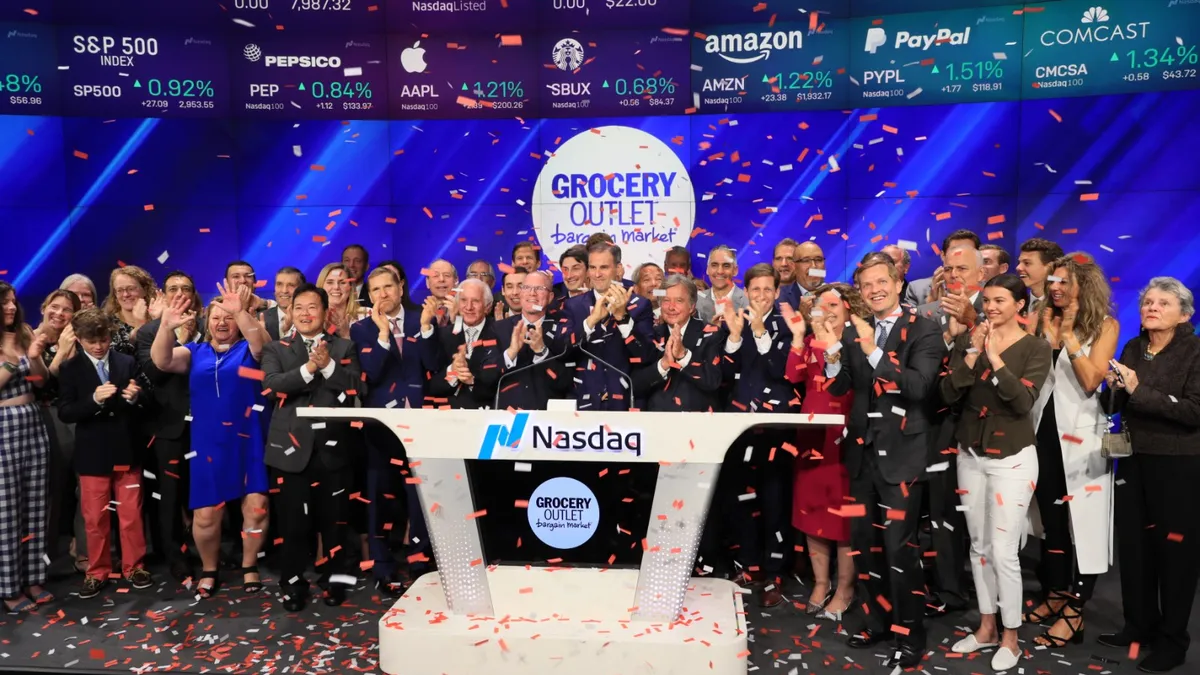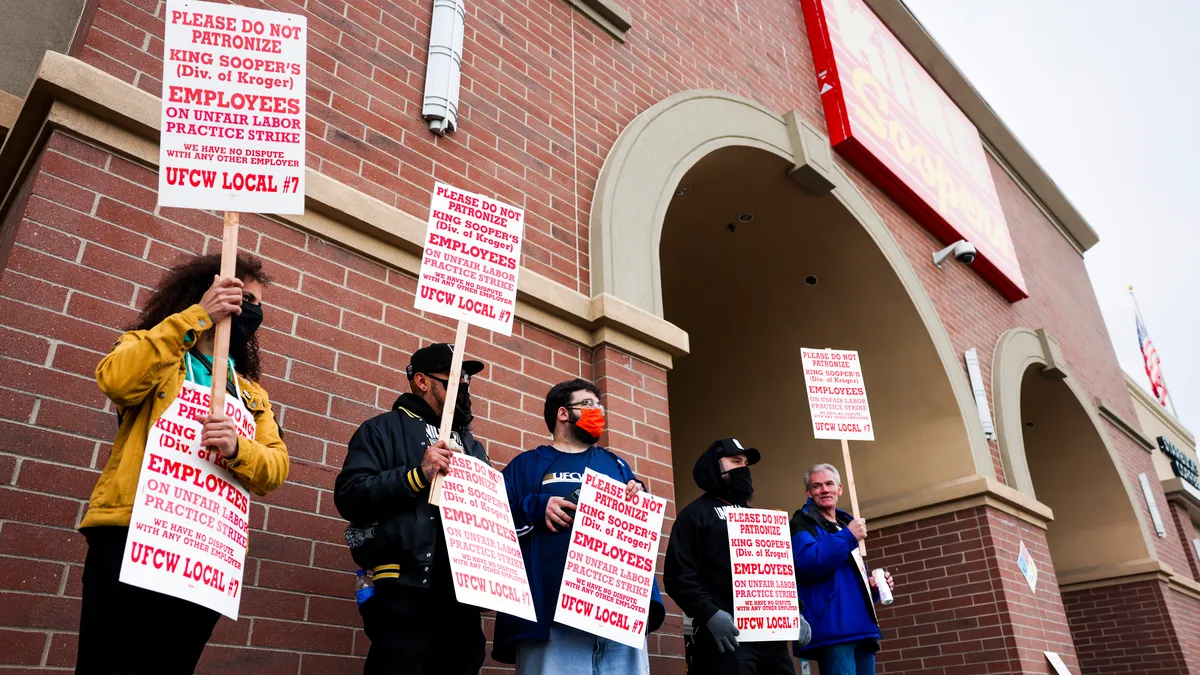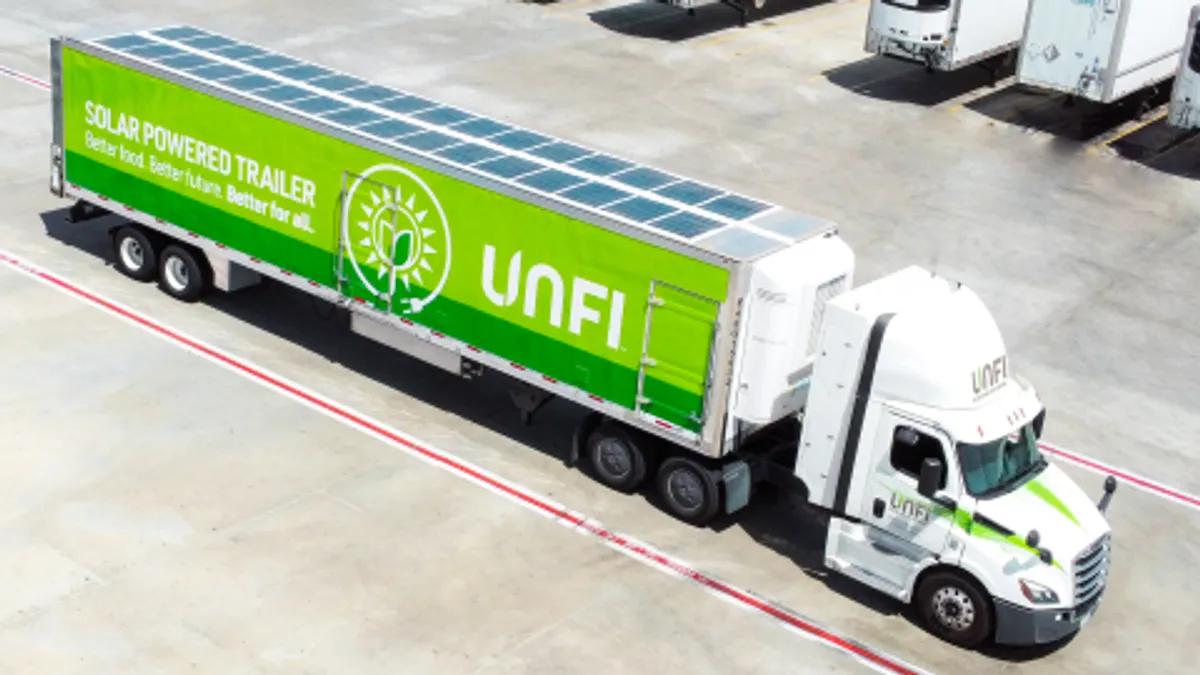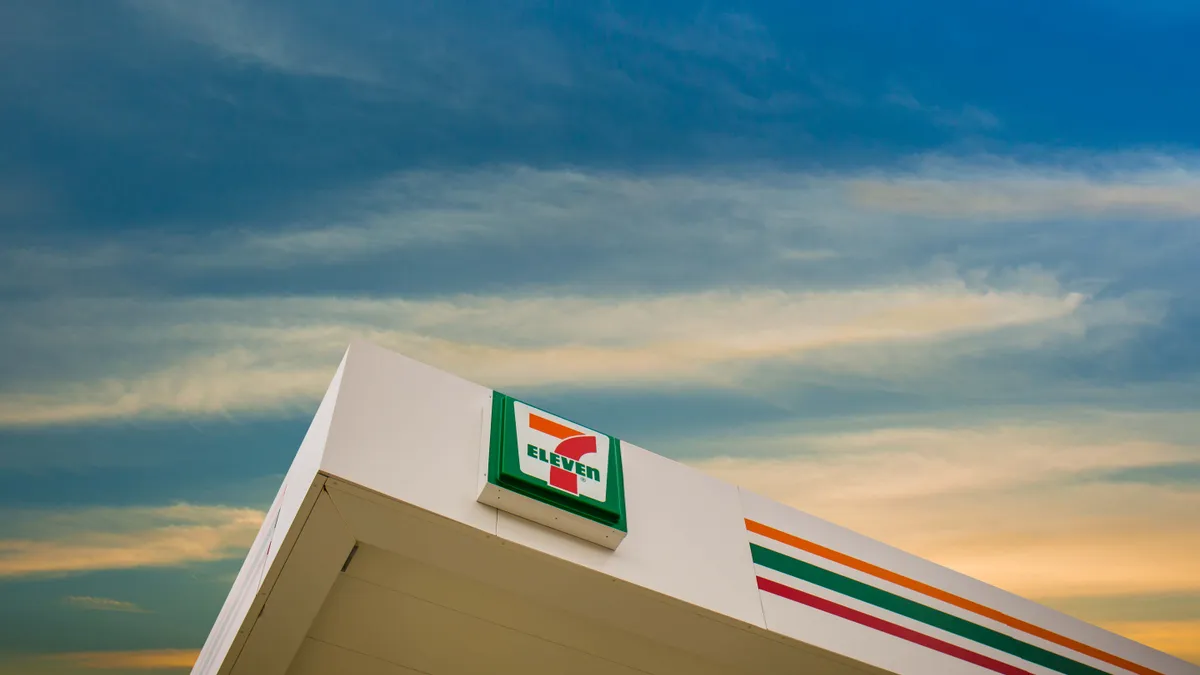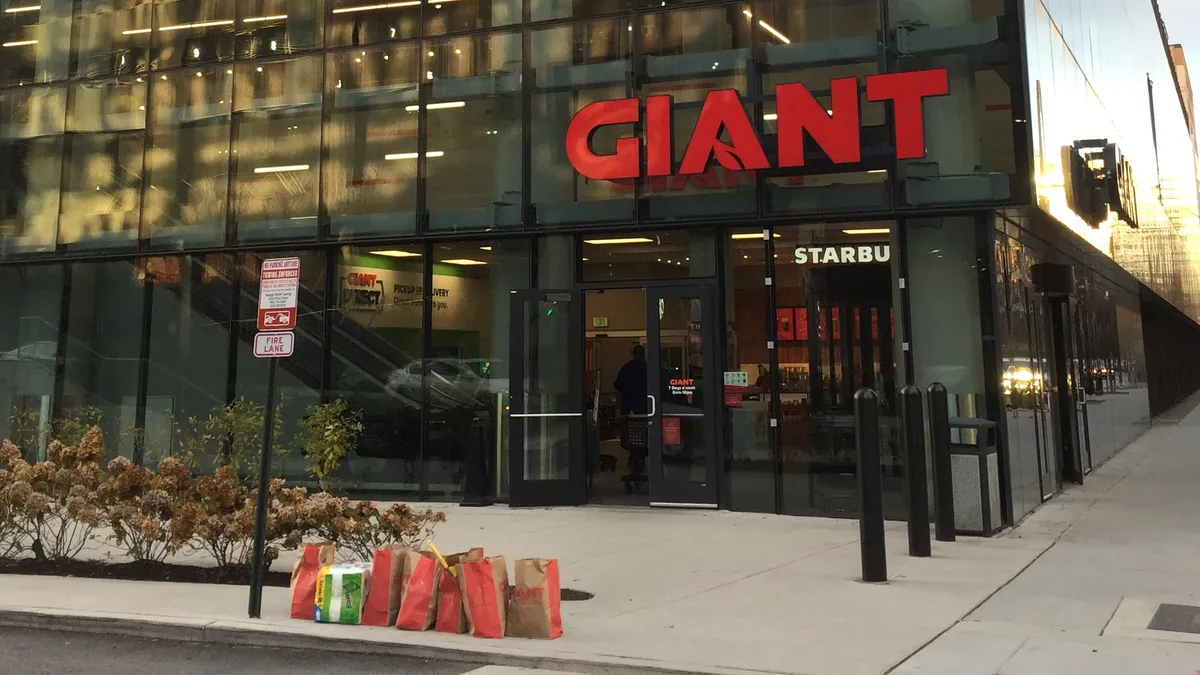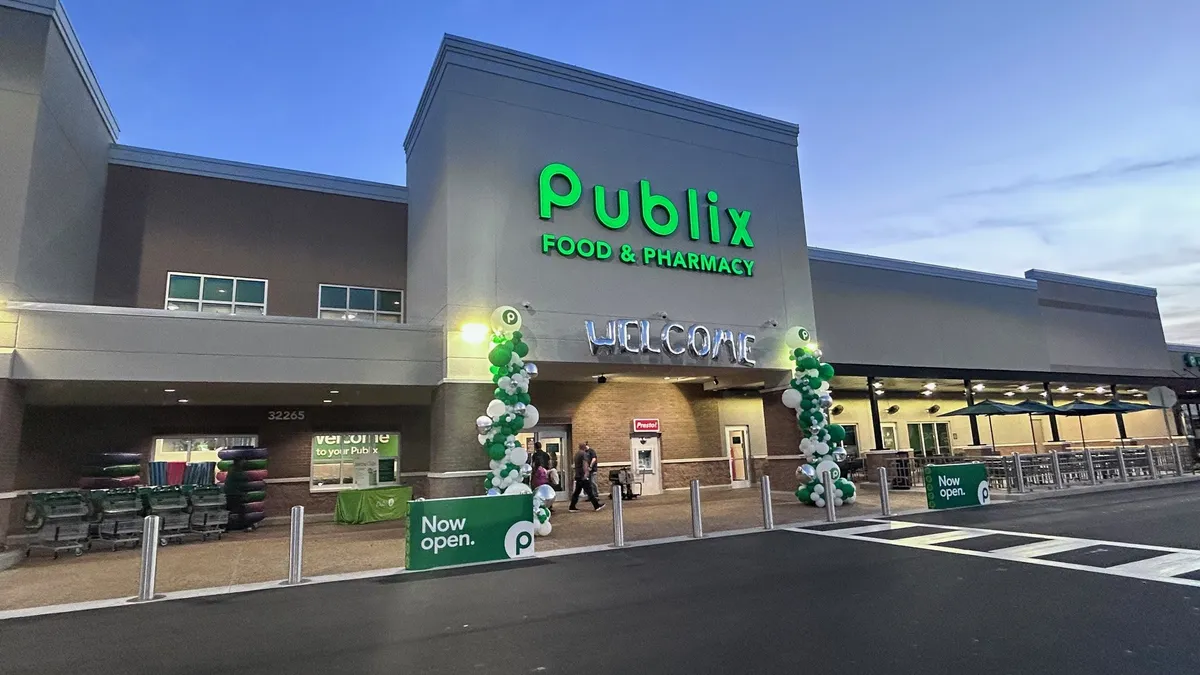As it looks to the future, Grocery Outlet is holding tight to its past.
Grocery Outlet began trading on the Nasdaq Thursday under the ticker symbol "GO." The company priced its initial public offering at $22 a share with about 17.19 million shares being offered to raise $378 million. At opening, shares were trading over the IPO price at $31 each.
Increased demand appears to have driven up the company’s IPO price. Earlier this week, Grocery Outlet raised its expected pricing to $18 to $19 per share, up from the $15 to $17 per share it announced June 10.
In an industry where many companies are struggling, Grocery Outlet has been growing rapidly with a commitment to discounts, an opportunistic buying model and a structure built on independent operators. The retailer currently operates 323 stores primarily in the western U.S.
The grocer’s plans for growth are ambitious. In its S-1 filing, Grocery Outlet said it sees potential to operate as many as 4,800 stores in the future in cities across the U.S. as a public company. But Grocery Outlet president RJ Sheedy told Grocery Dive in an interview that the company will grow at a measured, methodical pace in both new and existing markets to set each store up for success.
"It’s about continuing to orient toward value, continuing to support our independent operator community," he said. "And that’s really what we’re focused on, and we’ll continue to operate the business as we have in the past as we look forward."
The company sees demand for discount grocery getting even stronger. Grocery Outlet stands out from the competition with its brand name offerings and opportunistic buying model, which creates a sort of "treasure hunt" shopping experience.
The model results in a curated product selection that changes from week to week, and differs from store to store based on each operator’s knowledge of what their customers want. Brad Koszuta, senior consulting associate at McMillanDoolittle, said the approach drives more customer demand.
"You're looking for that deal, that steal ... you're looking for the thing that no one else can find," he said. There's that behavioral economics behind it. There's scarcity."
"We’ll continue to operate the business as we have in the past as we look forward."

RJ Sheedy
President, Grocery Outlet
Koszuta notes, however, that the company may face challenges in how it supplies its stores through this method as it expands and accelerates its growth.
"Oversupply is easier for a few hundred stores. A few thousand is a totally different conversation," he said.
But Sheedy said Grocery Outlet’s opportunistic buying model, which relies on buying surplus supply from brands and is a key part of the company’s history, will hold strong. Grocery Outlet plans to strengthen existing relationships and form new ones with emerging suppliers across categories to support growth on the purchasing side.
"We’re extremely proud of the partnerships that we have with supplier partners, many going back several decades, as we partner with companies to help them with surplus inventory and other needs from an inventory standpoint," Sheedy said.
Also integral to Grocery Outlet’s business model are its independent operators, who own and operate every store. These independent operators are Grocery Outlet’s connection to each community it serves, and help the company attract new shoppers who want to support locally run businesses.
As a public company, however, can the reliance on independent operators remain intact?
"Nothing will change with the independent operator model," Sheedy said. "It’s a key point of differentiation for us. It’s a defining piece within our culture. It’s been part of our history for a long, long time now."
Sheedy said the company will continue to find qualified people that have the right skill set and the right mindset to operate a Grocery Outlet store.
Koszuta noted that while the grocer has been successful with its independent operators so far, the consistency could get more difficult as the company expands to different regions.
Grocery Outlet could also face fiercer competition as a national, publicly traded grocer. As it expands across the U.S., there is likely to be overlap geographically with other notable grocers, especially discounter Aldi.
According to Sheedy, Grocery Outlet already sees some crossover with Aldi at 50 to 60 of its existing stores, and he is not particularly worried about the competition, though he admits Aldi is a great retailer.
For one, Aldi focuses on private label while Grocery Outlet offers predominantly name brands. Grocery Outlet offers the treasure hunt shopping experience and Aldi’s is more static and stable, Sheedy said. Grocery Outlet’s independent operator structure also creates a totally different experience for customers at each location, he noted.
"I think [we] have different points of appeal for different customers and so we co-exist with them just fine, and as far as where we’re looking to open more stores and any potential future overlap with them, you know, not a concern," Sheedy said.
Grocery Outlet is betting big on its different kind of discount shopping. While a surging stock price will certainly help fuel its growth, the company’s existing model may be the most important building block of all.



